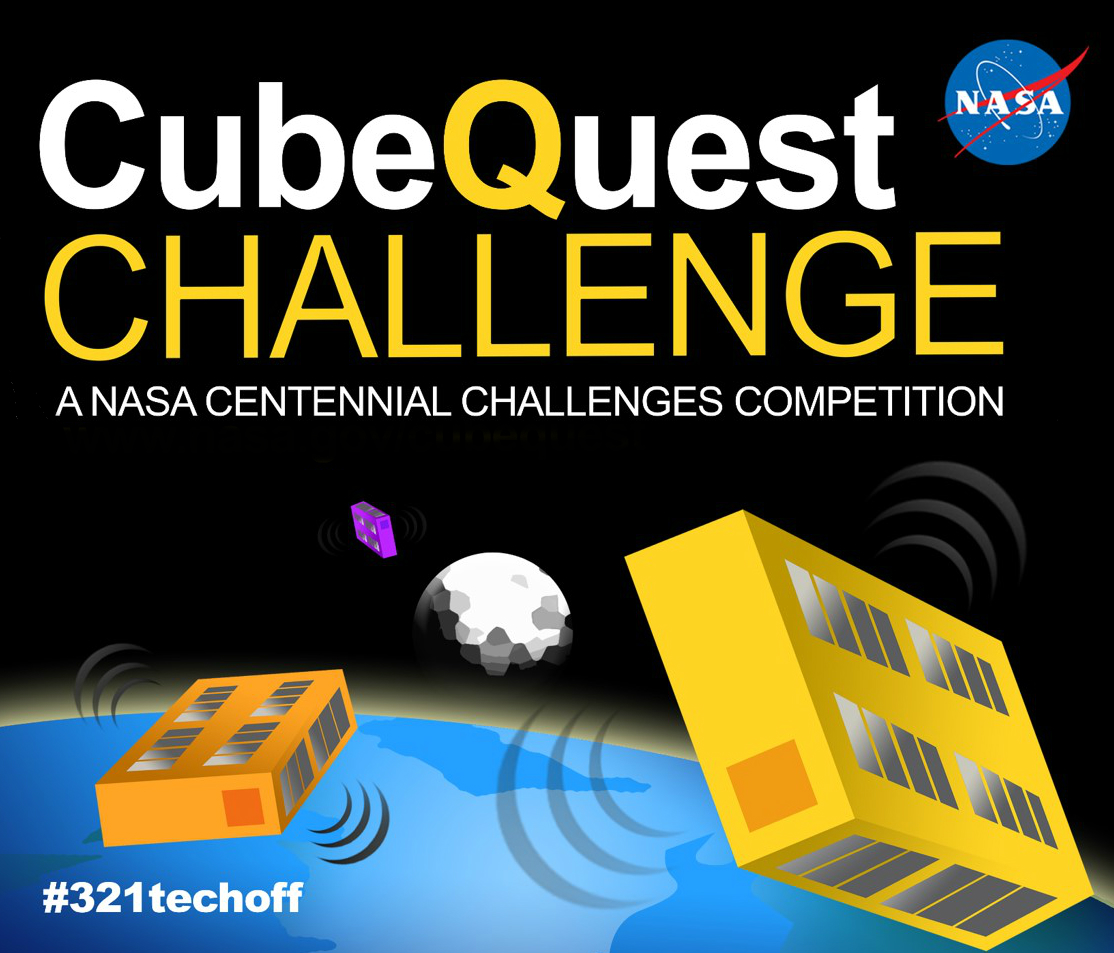
With the much-anticipated, first test flight of NASA’s Orion spacecraft now being just a few hours away, everyone’s attention has been mostly focused on the space agency’s critical first steps of returning astronauts to the Moon and other deep space destinations in the near future. Even though Orion’s upcoming high-profile and undoubtably historic first flight has been monopolizing the headlines for years, it has been by no means the sole focus of NASA’s efforts, which is actively engaged in a host of other research and development activities for deep-space exploration as well. Several of these fall under the agency’s Centennial Challenges Program of open technology prize competitions, which engage the general public, industry, and academia alike in the process of designing and demonstrating advanced new technologies that can benefit NASA and the U.S. aerospace industry at large. The latest entry in the Centennial Challenges Program’s long list of past successful prize competitions is the Cube Quest Challenge, which is also the agency’s first in-space competition, giving prospective participants the chance to send their own CubeSats to the Moon and beyond, onboard the Space Launch System heavy-lift rocket, during the latter’s first test flight later this decade.
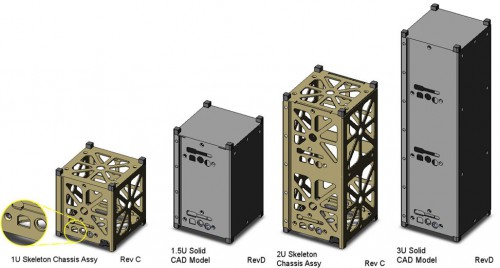
Even though the concept of launching miniaturized satellites into space is nothing new—with the first ones to ever leave Earth being NASA’s Moon-bound Pioneer 3 and 4 probes in the late 1950s—the advancement of small satellite technology and its potential for in-space applications didn’t become apparent until professors Jordi Puig-Suari of the California Polytechnic State University and Bob Twiggs of Stanford University developed the CubeSat Reference Design in 1999. As their name implies, CubeSats are cube-shaped nanosatellites which in their basic form factor have a standardized side length of 10 cm (also known as “one unit” CubeSats, or 1U) while weighting no more than 1.33 kg. As originally envisioned by their developers, the CubeSat design specifications were meant to be used only by university graduate students for research purposes, serving as guidelines on how to design and build miniaturized satellites using off-the-shelf equipment. Nevertheless, the whole concept quickly drew the attention of universities, government institutions, and entrepreneurs alike around the world, who realised the tiny satellites’ huge potential to be used in larger scalable versions (2U CubeSats or larger) for various scientific, defense, technology demonstration, and commercial purposes. The ability of CubeSats to be constructed by low-cost, readily available electronic parts and launched into space in swarms as secondary payloads on any launch vehicle with the use of standardized deployment systems, while typically costing less than $50,000 per unit to manufacture and operate, gradually provided a paradigm shift in the way satellites are designed, built, and operated.
A few years after the CubeSat concept was introduced, the first such satellites made their way into space, launched on top of a Russian Rokot rocket from the Plesetsk Cosmodrome in June 2003. Since then, the CubeSat industry has witnessed an explosive growth with more than a hundred such nanosatellites having been launched into space to date by dozens of private and government entities around the world, with many more already scheduled to take place in the next few years. One of the leading backers of CubeSat technology development is NASA, with the space agency actively engaging students and teachers from schools throughout the U.S. in the design, development, and operation of nanosatellites for scientific research, having already successfully flown six such Educational Launch of Nanosatellites missions, or ElaNa, since 2010 through the CubeSat Launch Initiative. Furthermore, the space agency has also been utilising the International Space Station as a CubeSat launch platform in recent years, having already successfully deployed many dozens of commercial nanosatellites from the orbiting platform through partnerships with private companies like NanoRacks and PlanetLabs.
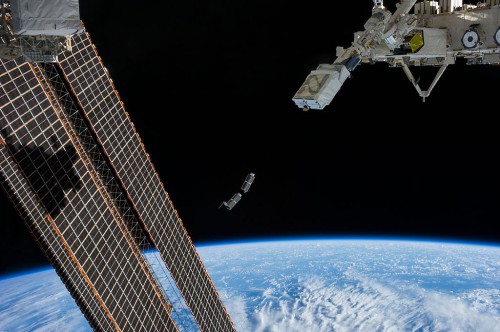
Every CubeSat that has been launched into space to date has been sent into low-Earth orbit, at altitudes of several hundred km above the ground. Nevertheless, there has been a growing interest in recent years for sending CubeSats to deep space destinations as well, in order to conduct scientific missions in a much more cost-effective and affordable manner than the conventional, large robotic spacecraft which are many orders of magnitude more expensive to build and operate. Staying true to its pioneering role of cutting-edge technology development, NASA is planning to launch 11 such deep-space CubeSat missions as secondary payloads on the unmanned first flight of the agency’s Space Launch System rocket, which is scheduled to take place within the 2017-2018 timeframe. Having already selected three mission concepts (BioSentinel, Lunar Flashlight, and Near Earth Asteroid Scout), NASA announced a new prize competition as part of its Centennial Challenges Program earlier this year during the 2014 Summer CubeSat Workshop in Logan, Utah, called Cube Quest Challenge, which will give participants the chance to fly their own CubeSats to the Moon on the remaining available payload slots of the first SLS flight, also known as Exploration Mission-1.
The competition, which was opened for registration earlier last month, is NASA’s first in-space competition, consisting of three main categories: The Ground Tournaments, the Lunar Propulsion and Communications Challenge, and the Deep Space Communications Challenge. The competition also offers the Program’s largest-ever prize purse of $5 million, divided among the different categories. Up to a total of $3 million will be offered for the Lunar Propulsion and Communications Challenge to be awarded to any competitors whose CubeSats will successfully enter lunar orbit and demonstrate an error-free communication with Earth, while the Deep Space Communications Challenge will award up to $1.5 million to any competitors whose CubeSats will be able to demonstrate an error-free communication from a distance of at least 4 million km from Earth, which is 10 times the distance between the Earth and the Moon. Each in-space competition will also consist of a set of four rounds of Ground Tournaments worth of a total of $500,000, which will be held in order to determine which competitor will qualify for having its CubeSat flown on the first SLS flight, while also giving contestants the option of alternatively choosing their own launch provider as well. “NASA’s Cube Quest Challenge will engage teams in the development of the new technologies that will advance the state of the art of CubeSats and demonstrate their capabilities as viable deep space explorers,” said in a statement Michael Gazarik, Associate Administrator for NASA’s Space Technology Mission Directorate at the agency’s Headquarters in Washington, D.C. “Prize competitions like this engage the general public and directly contribute to NASA’s goals while serving as a tool for open innovation.”
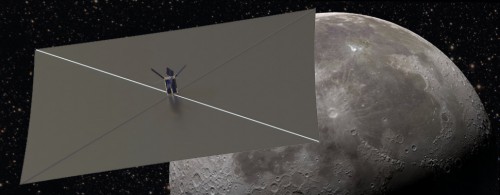
In order to learn more about the Cube Quest Challenge, AmericaSpace contacted Mr. Eric Eberly, Deputy Program Manager for NASA’s Centennial Challenges at the Marshall Space Flight Center in Huntsville, Ala., and asked him a few questions about the details of the competition.
AmericaSpace: Mr. Eberly, I’d like to thank you for taking the time to talk with us today about the Cube Quest Challenge. Would you like to give us more details about the technical aspects of the competition?
Eric Eberly: You’re welcome, and I appreciate your interest. We at NASA are very excited for this challenge that has been in the making for the past two to three years. We sought input from Subject Matter Experts in CubeSats and propulsion. This challenge is intended to advance the spacecraft propulsion and communication capabilities for CubeSats. CubeSats are a class within the nano-satellites. A 1U CubeSat is defined as 10cm cube in length, width, and height. We have selected a 6U volume for this challenge, which is six 1Us (2 x 3 measurements) and a mass limit of 14 kg. We are asking teams to design and develop a CubeSat to compete in a communication and propulsion challenge to go to the Moon or beyond. There are no CubeSats that have left the Earth gravity sphere. NASA has current plans for CubeSats going to the Moon, but they are using current technologies whereas we are looking to advance these technologies.
AmericaSpace: When is the Challenge scheduled to be held?
Eric Eberly: Competitor teams may register at any time, but no later than 30 days before their first Ground Tournament in which they wish to participate. Teams arranging for their own launch must register no later than 14 days before the date that their payload integrates with the deployer/dispenser device used by their launch service provider. Ground Tournaments take place every six months, starting in 2015. Teams competing for launch on the SLS must compete in at least Ground Tournament 4, currently planned for 2017.
The in-space competitions begin for each team when their CubeSat is deployed by their launch service, whether via third-party launches or SLS. These in-space competitions, except the Longevity Prize, end exactly 365 days after the respective times of deployment, but no later than 365 days after SLS secondary payload deployment—whichever occurs first. The only qualified competition to last longer than 365 days is the Longevity Prize competition, which will be conducted starting at the time of respective deployments and end for all teams exactly 365 days after SLS secondary payload deployment, regardless of launch vehicle.
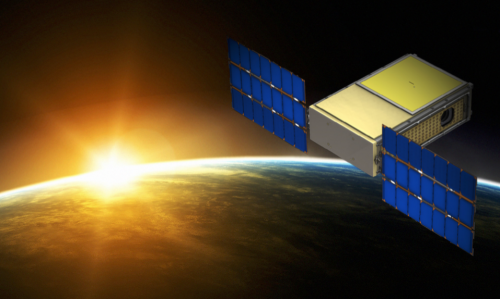
AmericaSpace: What are the goals of each category?
Eric Eberly: The categories are meant to incentivize technology development in CubeSat telemetry systems and propulsion systems. The longevity category will be awarded to the longest lasting 6U CubeSat. A successful team will need to mitigate space radiation and manage the thermal cycles in order to make their 6U CubeSat last the longest.
AmericaSpace: Will the participating teams have to compete in all of the Challenge’s categories in order to earn a payload slot for the first SLS flight?
Eric Eberly: Competitor Teams do not have to compete in the Ground Tournaments, as long as they are seeking an alternative launch provider. If a Competitor Team is vying for the NASA flight opportunity on SLS, then the Competitor Team must (at minimum) participate in Ground Tournament 4.
AmericaSpace: What will be the benefits of the Cube Quest Challenge for NASA?
Eric Eberly: The benefits will be advancement in communication capabilities and spacecraft propulsion capabilities—advancing small sat capabilities for here and beyond the Moon. We see it much like the cell phone industry. In the 1980s, cell phones were a suitcase you’d carry around, and now everyone has one in their pocket, even in a watch.We are looking for similar advancements for satellites. Conceivably, as we see the advancements of this challenge with communication and propulsion, we could have CubeSats doing routine exploration missions that were completed by satellites of much larger form and factor from years ago.
AmericaSpace: Mr. Eberly, before we close, I’d like to thank you again for taking the time to answer our questions and wish you all the best of success for the Centennial Challenges Program.
Eric Eberly: Thank you! I’d be happy to be able to help you again in the future.
More information regarding the Cube Quest Challenge’s rules can be found here. All interested parties can register for the competition through the NSPIRES document submission site here.
The author would like to thank Miss Janet Sudnik from the Office of Strategic Analysis & Communications at NASA’s Marshall Space Flight Center for her kind and essential help during the writing of this article.
Want to keep up-to-date with all things space? Be sure to “Like” AmericaSpace on Facebook and follow us on Twitter: @AmericaSpace




Isn’t anyone worried about all the space debris we are sending up there, in smaller but much more numerous packages?
@Scott Baker
To answer your question (as a scientist with decades of experience on various space missions), yes I am mildly concerned with the issue of space debris but I am most definitely *NOT* concerned about nanosatellites contributing in any significant way to the space debris problem (especially nanosats being sent to the Moon FAR from LEO where space debris is an issue!!!). The simple fact of the matter is that nanosats account for a miniscule fraction (either by mass or by number)of the objects in low Earth orbit. Besides, there are already established protocols to limit the lifetime of nanosats in LEO after they have finished their missions. And while more could certainly be done to have more users comply with these protocols, the fact of the matter is that nanosats do *NOT* contribute in any meaningful way to the space debris problem. The source of the space debris problem is elsewhere (ASAT test debris, debris from spent stages that have disintegrated, bits of sodium from old space reactors. etc.). And even if nanosats were a source of concern, how is a nanosat launched by SLS into an escape trajectory away from the Earth going to contribute to the LEO space debris problem??? How???
Exactly. Besides, it’s those bloody Briz upper stages that are the worst offenders in terms of space debris–even more so than ASAT tests or so the rumor has it.